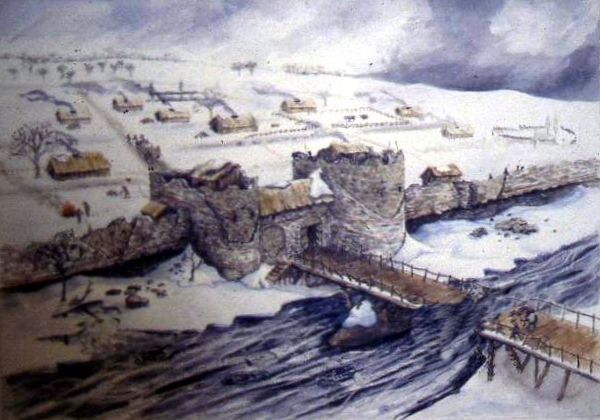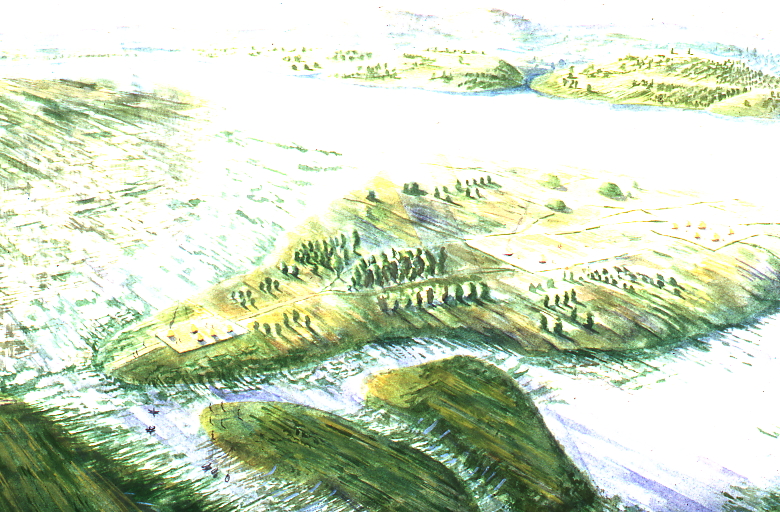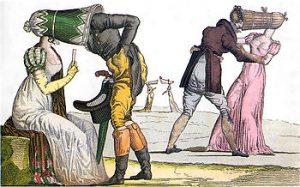THE REBIRTH OF SAXON LONDON ARCHAEOLOGY VIRTUAL WALK
This walk has now been completed but will be rerun soon.

Sunday 4th July 2021 6:30 PM
The Romans gave the name of Saxons to barbarian pirates that plagued the North Sea region in the Late Roman Period. Historians link them with the Angles to create the germanic Anglo-Saxon period of which London was the leading town. But excavation and DNA analysis make the traditional story more difficult to sustain and although the Anglo-Saxons have a rich history how much of it can be trusted? Was there a Dark Age? Or was it just a ‘transistion’? How did English become the main language sweeping aside native Celtic languages? Much of the story of Saxon London has been founded on myth and dubious historical sources, but archaeological, documentary and genetic research has beginning to provide a clearer narrative.
Following the fall of Roman Britain, London was almost deserted. On this walk we explore how London recovered and grew to be the most important City in England by 1066. We will concentrate on the period from 600 AD onwards, and will begin with the story of Lundenwic at Covent Garden. We will then walk along the Strand and Fleet Street to visit the empty City of Lundinium which had a rebirth in the 9th Century as Lundenburgh and which grew to become London – the largest City in the Kingdom by 1066.
This is a London Walks event by Kevin Flude To book click :
ARCHAEOLOGY OF LONDON GUIDED WALK – A TALE OF FOUR CITIES

Most Thursdays at 6.30pm City of London
Please note that you need to check it is running this week and book on this link.
This walk tells the epic tale of the uncovering of London’s past by Archaeologists. And provides an insight into the dramatic history of the Capital of Britannia, and how it survived revolts, fires, plagues, and reacted to the decline and fall of the Roman Empire. It became the foremost English City but with periods under Viking and Norman control.
We tell the story in the streets of the City of London, beginning in the valley of the River Walbrook by the Temple of Mithras, and visit many sites where important archaeological discoveries were made, including the Roman Forum, Amphitheatre. Bath Houses, Temples, Roman roads and the City Walls.
We explore the origins of London. The walk is given alternately by Kevin Flude & Leo Heaton
Please note that you need to book this walk.
Rebirth of Saxon London Virtual Walk Podcast
Here is an introduction to the Saxon London Walk Virtual Walk, taking place this Sunday at 6.30pm. The Podcasts includes Kevin Flude reading contemporary quotations from the end of Roman London and the beginning of Saxon London
Jane Austen’s London Walk

Jane Austen’s London takes place at 2.30 pm on Sunday, July 4th. The meeting point is Green Park underground station, London (north exit, on the corner)
This is a London Walks Walk. To book click here:
The walk takes in the area of the London section of Sense and Sensibility. This is where Jane Austen frequented when visiting her banking brother, Henry. He lived here during his ‘successful’ period, after resigning as a Captain in the Militia and setting up a bank to help soldiers pay for their commissions. He then did what all good bankers do – went bankrupt and ruined himself, family and friends. His uncle lost 10,000 pounds; his rich brother, Edward Knight lost £20,000. (that is 2/5ths of the fortune of Willoughby’s wife, and equal to the income of Darcy, 100 times the annual income of Mrs Austen after her husband died) i.e. a heck of a lot of money. Jane lost £13.
But this area was also the centre of the Ton – the wealthy elite of Regency London. It was here that the French Royal family, in exile, hung out, and the haunt of Beau Brummel and Prinny, the Prince Regent, loungers in chief who were so well satirised in the figure of Sir Walter Elliot. This is where the Dandies lounged, leered and shopped. Here the rich could get their guns, swords, cigars, snuff, hats, shoes, tailored clothes, uniforms, wine, prostitutes, lovers. They came to visit art galleries, see panoramas of European Cities, to ‘see’ the invisible women living in her glass jar, to choose their Wedgwood pottery.
And what is astonishing is that this is still where the megarich do exactly the same things: hang out and shop. All the top brands are here, and instead of people like John Willoughy are to be found Russian Oligarchs, and the rich of the Emirates, and every other country in the world. And most marvellously many of the shops survive into the present day. The same shops and shop fronts still in use. They catered to the stupidly wealthy of the 18th Century are now catering for the stupidly wealthy of the 21st Century. This is where you can buy luxury yachts.
So we follow Jane and Henry, and see the ghost traces left by immoral Willoughby, sensible Elinor, overwrought Marianne, dull but nice Edward Ferrars, dull and horrible Robert Ferrars, stolid Colonel Brandon, vulgar but kind Mrs Jennings and her unforgivably vulgar daughter Mrs Palmer with her despairing husband; the Middletons, the Steeles gals ruthlessly working their assets. Plus we have a little look at the relationship between Prinny and Beau Brummel, and the terrible childbed of Princess Ch
